Drip irrigation system and automatic ground watering pipeline outline diagram VectorMine

5 Tips For Planning A Drip Irrigation System AGCO FarmLife
Drip, or micro-irrigation, technology uses a network of plastic pipes to carry a low flow of water under low pressure to plants. Water is applied much more slowly than with sprinkler irrigation. Drip irrigation exceeds 90 percent efficiency whereas sprinkler systems are 50 to 70 percent efficient. It is so efficient that many water utilities.

Landscape & Lawn Drip Irrigation Design Layouts Drip irrigation diy, Drip irrigation system
Drip irrigation is the most efficient way to irrigate your raised garden beds, orchard, landscape, roses, shrubs, row crops, or even containers on a deck or patio. Setting a system up and putting it on a timer eliminates hours of hand watering and weeding as all the water goes directly to the desired plant's roots.
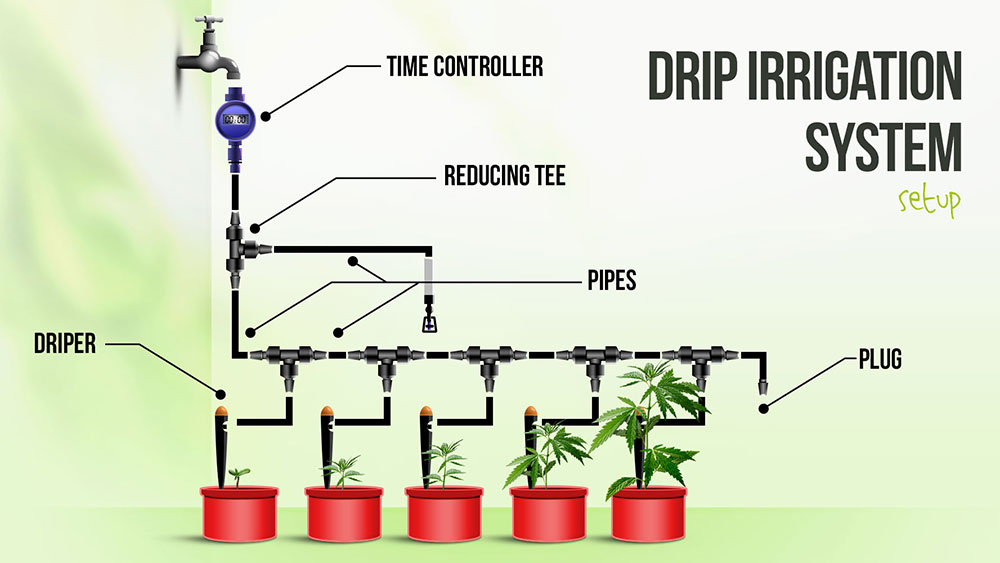
Do It Yourself Drip Irrigation System Make A Drip Irrigation System Tinker Crate Youtube
This guide covers the basics of design, installation, and maintenance for Rain Bird's XF Series Dripline. Included are design steps, technical data, installation layouts and design details to assist in the design of the more common dripline applications. Use of dripline is a preferred method in many low-volume irrigation applications.

Drip irrigation system layout isometric Royalty Free Vector
Step 1 Where to Buy Drip Irrigation Systems You can find kits and individual components online and at home centers, garden centers and plumbing suppliers. A basic kit that waters up to 20 containers or a 75-sq.-ft. area costs $25 to $50 and comes with everything you need except the timer. Higher quality kits may cost $70 or more. Step 2

A simple bucket kit for irrigating a small vegetable garden plot of... Download Scientific Diagram
1 Check legal requirements. Before you begin, contact your water purveyor or municipal water department to ask about laws, codes, and permits related to drip irrigation systems. Each area and water purveyor may have its own requirements, and some require a licensed irrigator and/or backflow tester to be present during the installation.
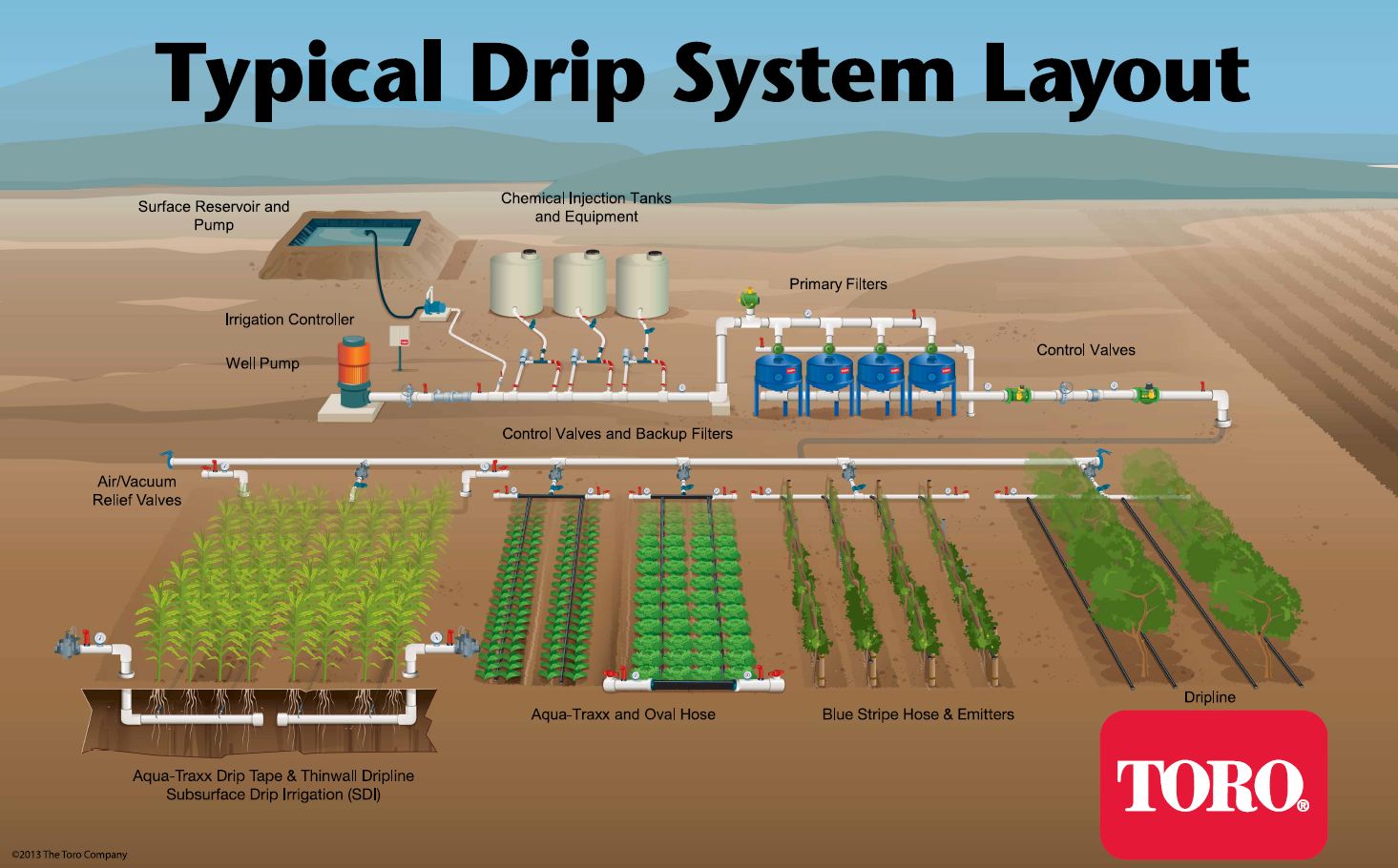
Typical Drip Irrigation System Layout
Attach 24-volt sprinkler wire to the solenoid on each valve (the cylindrical part at the top that opens and closes the valve electronically) using weatherproof wire nuts. Run the sprinkler wire to the timer and connect each wire to the corresponding terminal inside the timer. Thread a drip filter onto the outlet of each valve.
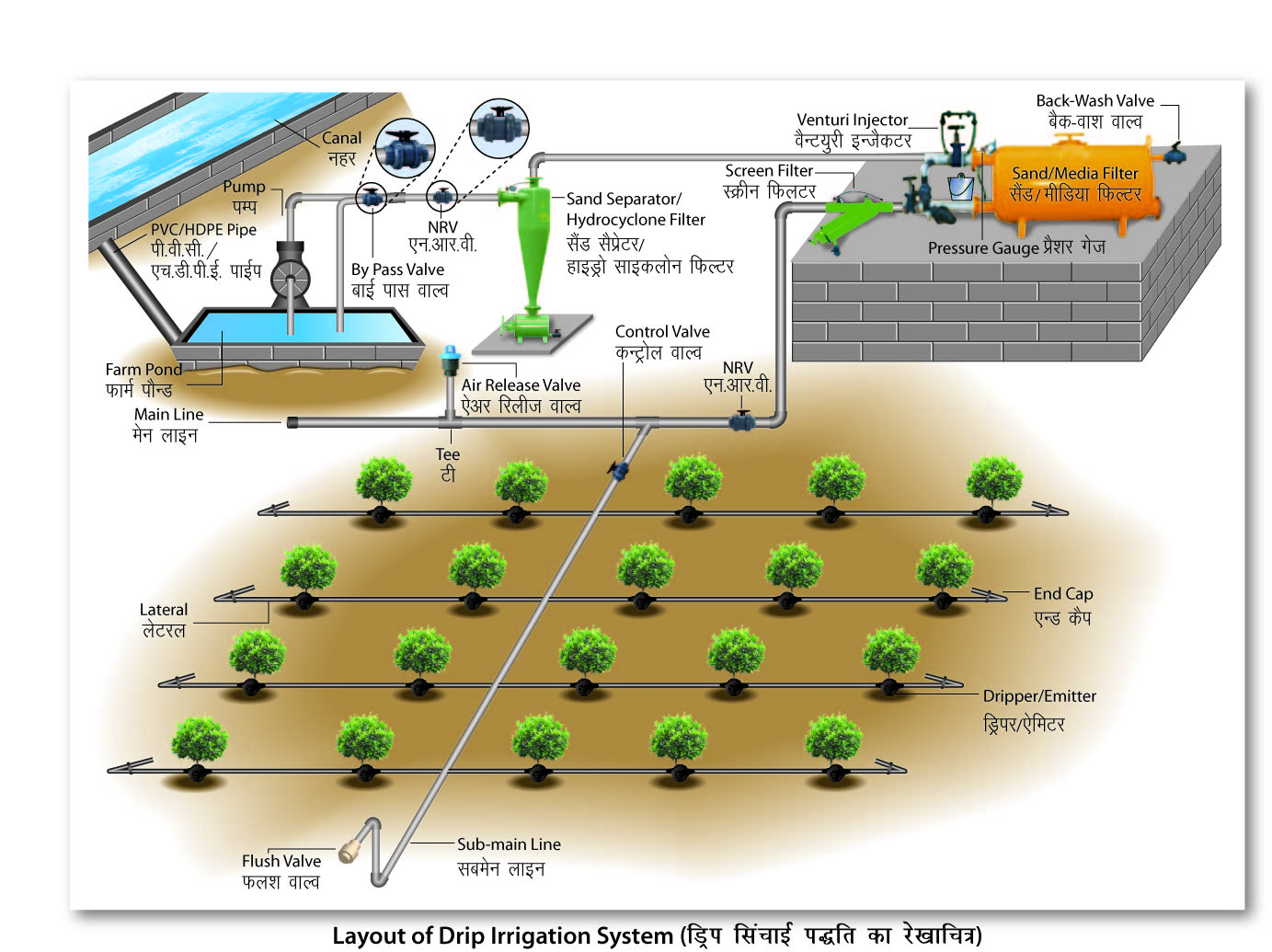
Drip Irrigation Vs Sprinkler Irrigation Farming Agri Farming
This drip irrigation installation guide helps water-wise homeowners design and install a complete system.. Mark each emitter's placement on the diagram and circle the emitter's coverage. Label each emitter and its type, such as .5 GPH drip or 10-GPH 180-degree sprayer. Total the emitter's flow rate. The 1/2-inch poly tubing commonly used in.

Getting Started With Drip System Hydroponics 8 Things You Need To Know
• Netafim is the world leader in drip irrigation. Since 1965 Netafim has pioneered the science of subsurface, on-surface and point source drip irrigation and manufacturing. Serving more than 80 countries worldwide, sales in 2003 will approach $300 million. • Techline DL has been used successfully in landscape since 1987 in North America.
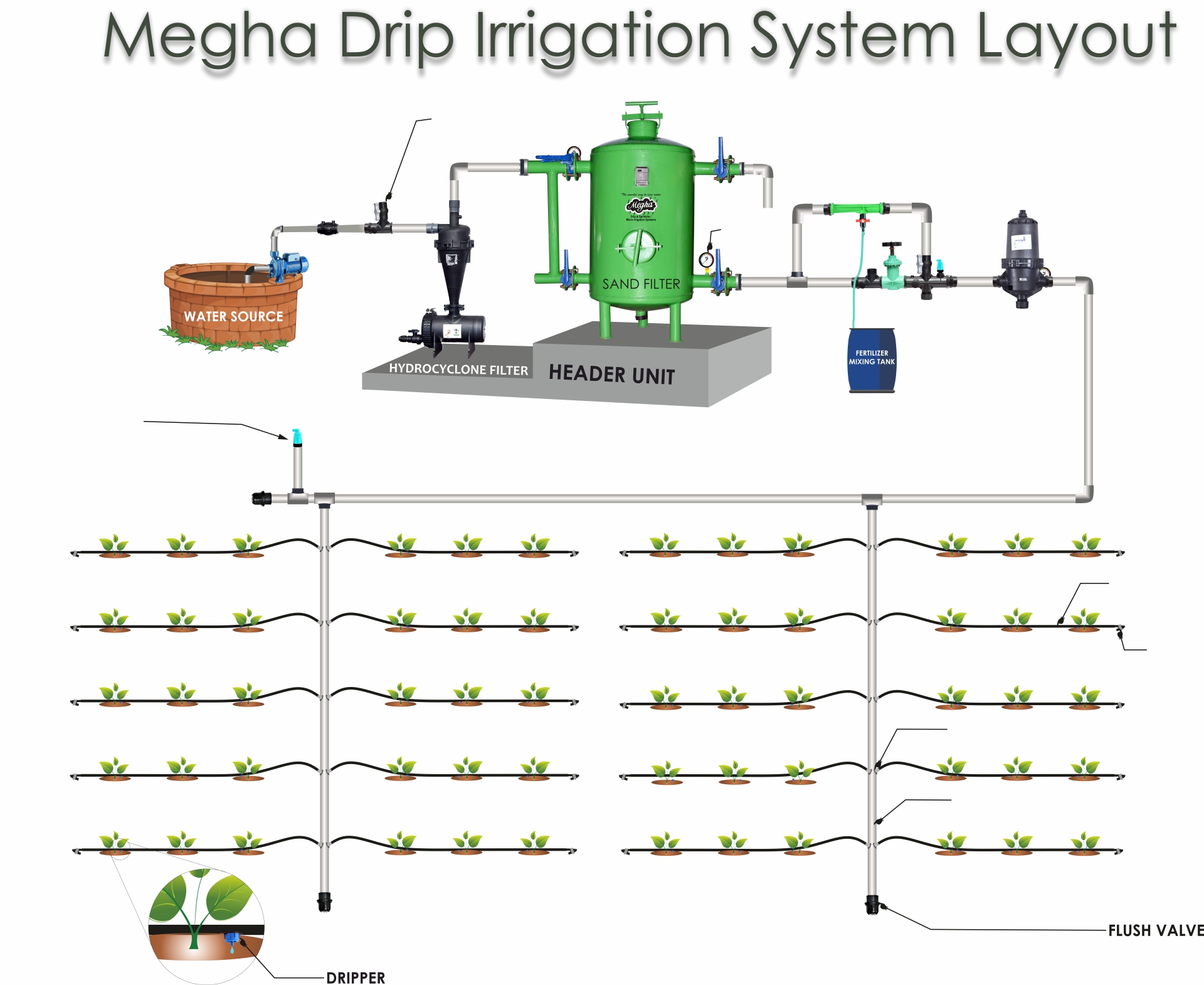
Drip Irrigation Megha Agrotech
Drip irrigation or trickle irrigation is a type of micro-irrigation system that has the potential to save water and nutrients by allowing water to drip slowly to the roots of plants, either from above the soil surface or buried below the surface. The goal is to place water directly into the root zone and minimize evaporation.

What Is Drip Hydroponics? NoSoilSolutions
The "Typical Drip Irrigation Layout" illustration has been developed to help those who are unfamiliar with drip irrigation understand basic drip irrigation system components and concepts. The drip irrigation layout illustration is organized into two halves. First, the "headworks" portion of a drip irrigation system shows the typical water sources, pumps, filters, chemical injection.

Diy Drip Irrigation For Vegetable Garden / Drip Irrigation For Raised Bed Gardens Organic
1 Lay Out Irrigation Grid Drip irrigation prevents overwatering. The system consists of interconnected drip irrigation tools such as emitters, hoses and valves. An emitter will consistently provide water to a plant's roots. Laying these tools out correctly will give the best results. Your grid plan will consist primarily of hoses and emitters.

Typical Layouts Support Materials Netafim Garden irrigation system, Irrigation system
Handy diagrams on setting up your drip irrigation system from the hose bib to the lines. Skip to content Quality Seeds, Plants and Growing Supplies Since 1976
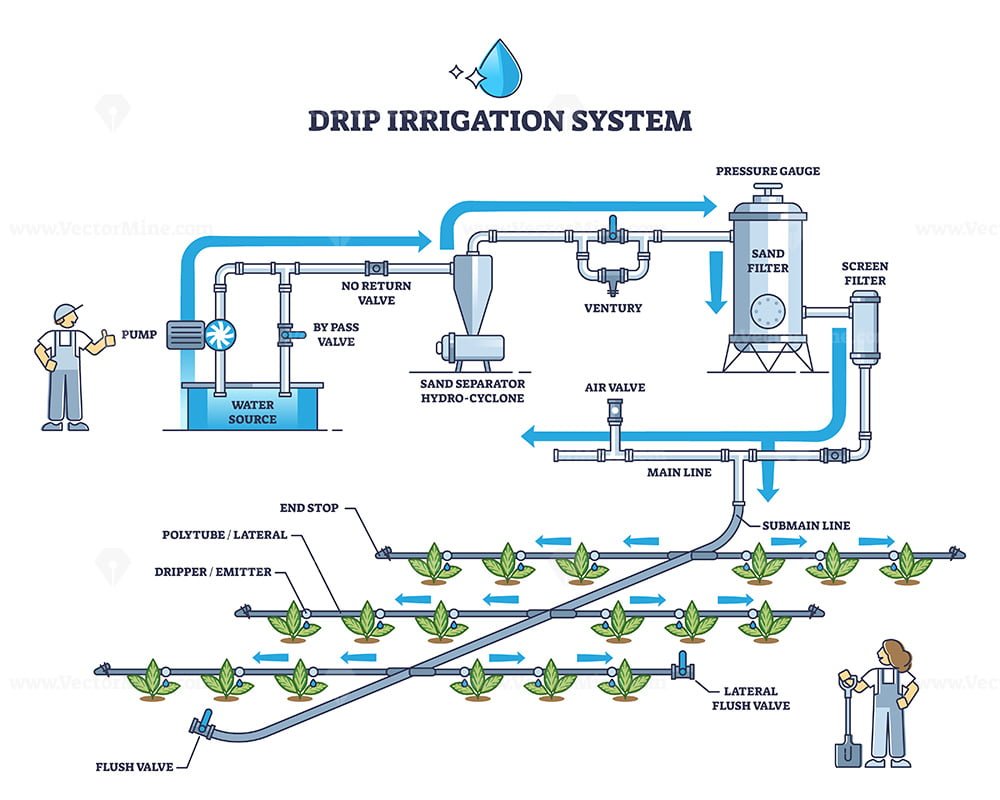
Drip irrigation system and automatic ground watering pipeline outline diagram VectorMine
INTRODUCTION The combination of PLD, Eco-Wrap ®, and Eco-Mat provides a comprehensive suite of inline drip irrigation products for landscape professionals. Together, they are designed to efficiently irrigate any planted area. Irrigation's most basic function is to provide water where and when it is needed.

Drip Irrigation For Increased Vegetable Production Graduate Farmer
Drip irrigation - also known as low-flow, micro, and trickle irrigation - is the slow, measured application of water through devices called emitters. It is the most eficient way to irrigate. A wide variety of quality products has been developed to make drip irrigation reliable and easy to use for almost any landscape situation.

Best Hydroponic Drip System Ultimate Guide {Updated 2021} Small Scale Gardener
Method 1 - Faucet Connection One of the easiest ways to install a drip application above ground is starting from an outdoor faucet using 1/2″ poly tubing as the main lateral line.
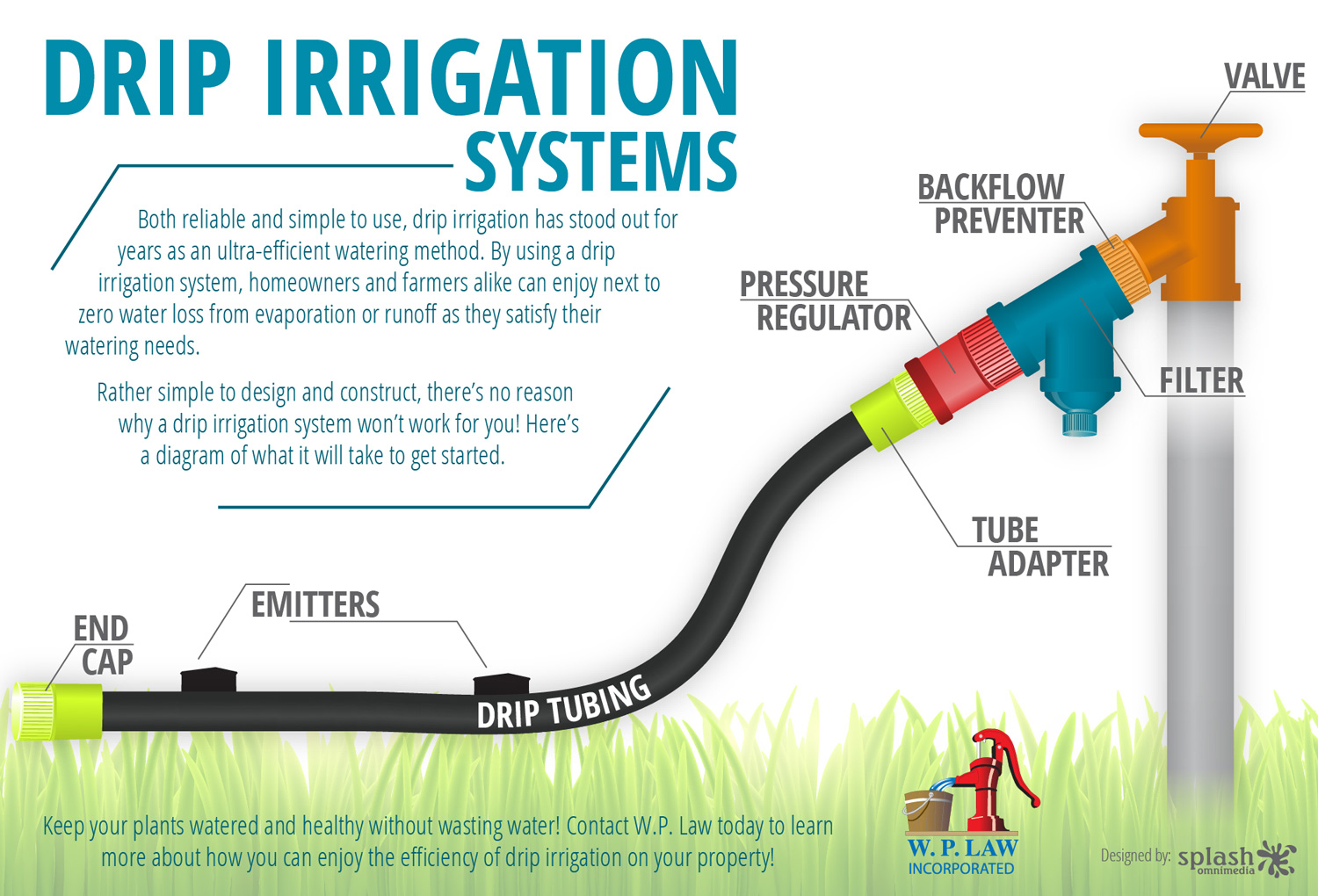
DripIrrigationSystemBreakdown HACHI Nông Nghiệp Thông Minh
Drip Irrigation, also commonly referred to as micro-irrigation, trickle irrigation, low volume irrigation or xerigation. This is a method of irrigation which eficiently delivers water to the soil surface or the root zone; this is done by having water drip slowly from emission devices, most commonly called "drip emitters" or "drippers".